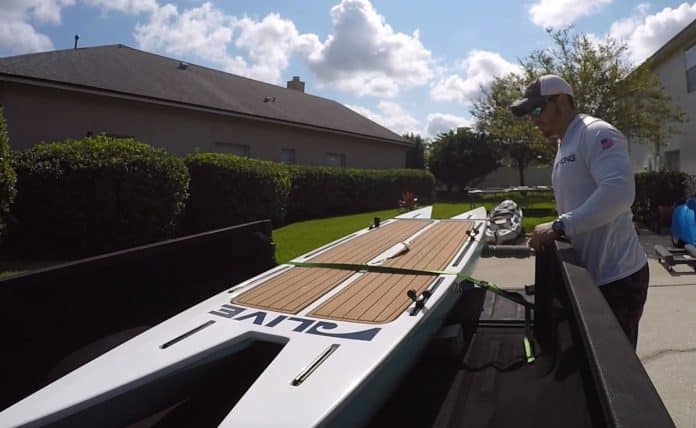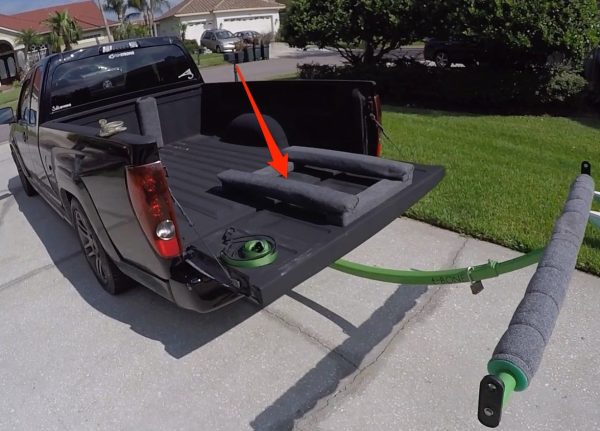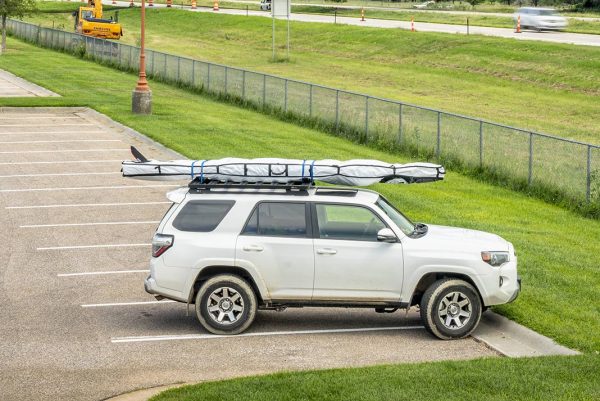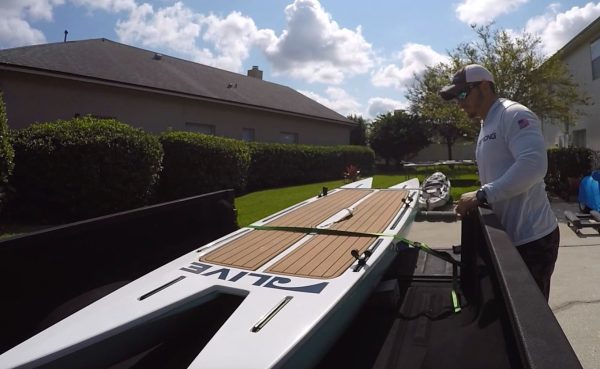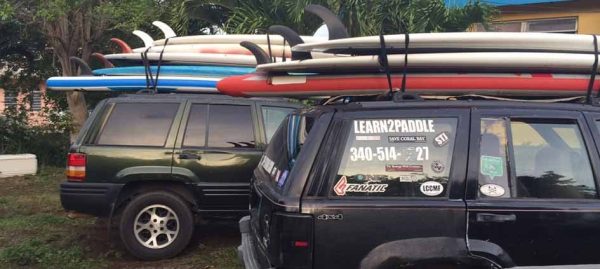Have you ever wondered about the best way to transport your SUP board? Whether planning a spontaneous trip to the beach or a road trip with friends, ensuring your paddleboard arrives safely is crucial.
This article will explore various transportation options and provide helpful tips to guarantee a smooth journey for your beloved SUP board.
Choosing a Transport Method
When transporting your SUP board, there are several factors to consider. The first thing you should consider is the vehicle type you have or plan to use. Different vehicles offer different advantages when transporting SUP boards, so choosing one that suits your needs is essential.
Your budget is another crucial factor to consider. Transporting your SUP board can require additional equipment or modifications to your vehicle, so it’s essential to evaluate your budget beforehand. Lastly, you need to assess your physical capabilities. Some transportation methods may require more physical strength and agility than others, so choose a method you can manage comfortably.
Using a Roof Rack
Installing a roof rack on your vehicle is one of the most common and convenient ways to transport a SUP board. To install a roof rack, you’ll need to follow the manufacturer’s instructions and ensure that it is securely fastened to your vehicle’s roof. You can secure your SUP board once the roof rack is installed correctly.
Securing your SUP board on a roof rack requires a few simple steps. First, place your SUP board on the roof rack, ensuring it is positioned with the fins facing upwards. Then, use appropriate straps or tie-downs to secure the board to the roof rack, ensuring it is tightly strapped to prevent movement during transportation.
To ensure a safe and hassle-free journey, here are a few tips for transporting your SUP board on a roof rack:
- Double-check the tightness of the straps before hitting the road to avoid any unexpected loosening during transportation.
- Consider investing in locking straps to add an extra layer of security and prevent theft.
- To minimize potential damage, place a protective cover or padding between the SUP board and the roof rack.
- Be mindful of the height clearance when passing under low bridges or parking in garages to avoid accidents.
- Regularly check the straps and roof rack for wear and tear, ensuring they are still in good condition and functioning correctly.
This image is the property of www.saltstrong.com.
Using Straps and Tie-Downs
If you don’t have a roof rack or prefer an alternative method, straps and tie-downs can effectively transport your SUP board. When selecting the proper straps and tie-downs, choosing strong, durable, and designed explicitly for securing paddleboards is essential.
Once you have the appropriate straps and tie-downs, follow these steps to secure your SUP board:
- Place the SUP board on the roof of your vehicle, ensuring it is centered and aligned correctly.
- Loop the straps around the board, ensuring they pass over the deck and under the hull, creating a crisscross pattern for maximum security.
- Pull the straps tight, but be careful not to over-tighten and damage your board.
- Secure the loose ends of the straps to a sturdy anchor point on your vehicle, such as the roof rails or tow hooks.
- Double-check the tightness of the straps and give them a gentle tug to ensure they are securely fastened.
To make your SUP board transportation even more convenient and safe, here are a few additional tips for using straps and tie-downs:
- Use protective pads or covers between the straps and your board to prevent damage or scratches.
- Regularly inspect the straps for any signs of wear and tear, replacing them if necessary.
- Avoid tying the straps directly to your vehicle’s roof, as this can cause damage and provide insufficient security.
- Consider using cam buckle or ratchet straps for more accessible and precise adjustments.
Using a SUP Board Bag
Transporting your SUP board in a bag provides additional protection and convenience. Choosing a suitable SUP board bag is crucial to ensure a secure and comfortable journey for your board.
When selecting a SUP board bag, ensure it is designed explicitly for paddleboards and offers sufficient padding and protection. Consider the size of your board and any additional accessories you may need to transport. Look for bags with sturdy handles and shoulder straps for easy carrying.
To prepare your SUP board for transportation in a bag:
- Clean and dry your SUP board thoroughly before placing it in the bag to prevent any moisture or dirt from causing damage.
- Remove fins or accessories that may protrude from the board and store them safely in a separate compartment or bag.
- Carefully slide your SUP board into the bag, ensuring it fits snugly without excessive force or bending.
- Secure all bag zippers, straps, and closures to ensure the board remains securely inside during transportation.
To make the most of your SUP board bag and ensure a smooth journey, follow these best practices:
- Avoid overpacking the bag with excessive gear or accessories, as this can strain the bag and damage your board.
- Follow the bag manufacturer’s instructions for carrying and handling to prevent any unnecessary strain or damage.
- Store the bag in a cool and dry place when not in use to maintain its integrity and functionality.
This image is the property of paddling magazine-images.s3.amazonaws.com.
Using a Trailer
Using a trailer can be a practical solution if you have a larger vehicle or frequently transport multiple SUP boards. However, it’s essential to determine the right trailer size and ensure it is compatible with your vehicle.
When selecting a trailer, ensure it can comfortably accommodate the length, width, and weight of your SUP board(s). Check the trailer’s load capacity, suspension, and hitch compatibility to meet your transportation needs.
Securing your SUP board on a trailer requires careful attention to detail. Follow these steps to ensure a safe transportation experience:
- Place your SUP board(s) on the trailer, ensuring they are positioned correctly and securely.
- Use appropriate straps or tie-downs to secure the boards to the trailer, ensuring they are tightly fastened and immobile.
- Double-check the tightness of the straps after a short test drive to ensure they remain secure throughout the journey.
When towing a trailer with your SUP board(s), consider the following:
- Understand and adhere to local laws and regulations regarding trailer towing, including speed limits and parking restrictions.
- Practice driving with the trailer before embarking on longer journeys to get comfortable with the added weight and altered maneuverability.
- Maintain a safe stopping distance and be aware of the extended length of your vehicle and trailer combination.
- Regularly inspect the trailer’s tires, lights, and hitch connections to ensure everything is in good working condition.
Transporting Inflatable SUP Boards
Transporting inflatable SUP boards requires a slightly different approach compared to rigid boards. Before transporting your inflatable SUP board, you must deflate and pack it properly.
To deflate and pack your inflatable SUP board:
- Find a suitable location with enough space to lay out your board.
- Remove any fins or accessories from the board and store them separately.
- Open the valve(s) on the board and allow the air to escape entirely. Use a hand pump or other appropriate tool to aid deflation.
- Gently fold the board into a compact size, starting from the nose, and roll it tightly towards the tail.
- Once rolled, secure the board with the provided straps or use additional straps to compact it tightly.
Choosing the appropriate storage and transportation bag for your inflatable SUP board is crucial to ensure its protection during transit. Look for durable, waterproof bags that provide sufficient padding and protection against punctures or tears.
This image is the property of www.saltstrong.com.
Transporting SUP Boards on Public Transportation
If you plan to transport your SUP board on public transportation, such as buses or trains, it’s essential to check the regulations and guidelines beforehand. Different transportation companies may have specific requirements or restrictions when carrying sports equipment.
Start by researching the policies of the public transportation provider you will use. Some companies may require storing your SUP board in a specific bag or container, while others may have size limitations. Be prepared to ask for clarification or provide additional information if necessary.
To prepare your SUP board for public transportation:
- Clean and dry your SUP board thoroughly to avoid any mess or damage.
- Pack your SUP board in an appropriate bag or container that meets the transportation company’s guidelines if required.
- Arrive at the station or stop early to ensure you have enough time to navigate any necessary procedures or inquiries.
To ensure a smooth journey, consider the following tips:
- Be kind and communicative with the transportation staff, asking for guidance or assistance if needed.
- Be mindful of other passengers and ensure your SUP board does not obstruct any walkways or exits.
- Stay updated with any changes or delays in the public transportation schedule to avoid unnecessary stress or inconvenience.
Group Transportation
Transporting SUP boards in a group setting, such as a paddling club or a group of friends, requires additional planning and organization. Renting a van or a large vehicle can be a practical solution to accommodate multiple boards and paddlers.
When renting a van or a large vehicle, consider its size and capacity to ensure it can comfortably accommodate all the SUP boards and gear. Book the vehicle in advance to secure availability during your desired time frame.
To stack multiple SUP boards safely:
- Lay down a non-slip mat or towel on the vehicle’s floor to provide traction and prevent boards from sliding.
- Place the first board flat on the mat with the fins facing upwards.
- Add padding or foam blocks between the boards to prevent them from rubbing against each other and causing damage.
- Carefully stack the remaining boards on each other, ensuring they are aligned and secure.
- Use straps or tie-downs to secure the entire stack of boards to the vehicle.
Organizing group transportation logistics can be challenging but essential for a successful outing. Consider creating a schedule and coordinating pick-up/drop-off points to ensure everyone arrives at the designated location on time. Communication among the group members is crucial to address potential issues or plan changes.
This image is the property of www.sup-stjohn.com.
Transporting Long Distances
Transporting your SUP board over long distances requires additional considerations to ensure its safety and security throughout the journey. Here are some crucial points to keep in mind:
Before starting a long-distance journey, you should thoroughly prepare your SUP board. Clean and dry your board, inspect it for any damage or necessary repairs, and ensure all accessories are securely attached. If needed, apply a protective wax or coating layer to safeguard the board during the trip.
When planning stops and rest breaks, select locations with suitable parking and security for your SUP board. Look for areas with designated parking spaces or surveillance to minimize the risk of theft or damage. It’s also wise to avoid leaving your board unattended for extended periods, especially in remote or unfamiliar areas.
During overnight stops, prioritize the security of your SUP board. Store it in a locked area, such as a hotel room, car trunk, or secured storage facility whenever possible. If you are camping or staying in a remote location, consider using additional security measures, such as bike or SUP board-specific locks, to deter theft.
Transportation Accessories and Safety Equipment
To enhance the transportation experience and ensure the safety of your SUP board, consider using suitable board straps, carriers, and other accessories. Here are a few recommendations:
Choosing suitable board straps and carriers is essential to secure and protect your SUP board during transportation. Look for high-quality straps made from durable materials that provide reliable strength and hold. Carriers explicitly designed for SUP boards can add convenience and safeguard against potential damage.
Using protective covers and padding is another way to ensure the safety and longevity of your SUP board. Protective covers can shield the board from dirt, dust, and harsh elements, while padding can prevent scratches or dings during transportation.
Equipping your vehicle with safety gear is crucial for any transportation endeavor. Ensure you have a reliable first aid kit, emergency tools, and a functional spare tire. Consider adding reflective markers or flags to increase the visibility of your vehicle, especially when transporting longer or wider SUP boards.
Transporting your SUP board can be a straightforward and enjoyable experience when you choose the suitable method and take the necessary precautions. By considering the type of vehicle, evaluating your budget, and assessing your physical capabilities, you can select the most suitable transportation method for your needs.
Whether using a roof rack, straps, tie-downs, a SUP board bag, a trailer, or even public transportation, follow the appropriate steps and safety guidelines to ensure your SUP board arrives at its destination safely. Remember to choose reliable transportation accessories and equip your vehicle with essential safety gear to enhance your transportation experience further. Happy paddling!
This image is the property of www.weekendwarrior.net.au.

